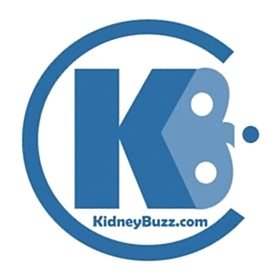All Dialysis patients agree that the ultimate goal of Hemodialysis should always be safety and effectiveness, whether it is done In-Center or at Home. These goals are accomplished by ongoing assessments and monitoring before, during, and after treatments. One important area that is monitored for Chronic Kidney Disease patients during their treatment is the Dialysis Needle Access. If the needle returning the cleansed blood back to the body (Venous Needle) disconnects, blood is pumped into the bed or chair, resulting in mild to severe blood loss. When this occurs it is known as a Venous Needle Dislodgement (VND). This is a rather rare, but potentially serious complication of Hemodialysis.
Recommended Reading: 1 in 5 Dialysis Patients Die Yearly. Needle Dislodgement Turning Deadly Contributes To Statistic
Although rare, it is important to know that Needle Dislodgement during Dialysis is unpredictable and can occur even with the best safety practices and vigilance. A number of safety precautions are routinely followed to help keep Chronic Kidney Disease patients safe during their Dialysis treatments including: Secure taping of the needle, loosely taping bloodlines to prevent needles from pulling out, and being able to see the access site.
Recommended Reading: Life Saving Device Provides CKD Patients On Dialysis A Feeling Of Safety And Peace Of Mind
In an effort to raise Needle Dislodgement awareness, assist Chronic Kidney Disease patients' health outcomes, and recommend practice guidelines; the American Nephrology Nurses Association (ANNA) created a special workgroup project. The workgroup used research to develop a VND risk assessment tool to help identify patients who are at a greater risk for Needle Dislodgement.
Recommended Reading: Life Saving Device Provides CKD Patients On Dialysis A Feeling Of Safety And Peace Of Mind
Increased risk for Needle Dislodgement during Dialysis may include the following:
1. It is a well-known fact that the last two hours of Dialysis is a high-risk period of time for this type of problem. It is believed that is when people become more restless which increases the chances that the needle will come out.
2. Blankets or covers placed over the Access may increase the risk of the needle dislodging during Dialysis. There are two good reasons for Chronic Kidney Disease patients to keep their Dialysis Access uncovered. First, covering the Dialysis Access prevents being able to see it and any problems such as the Venous Needle not being secure, pulling out, or if there is blood, and early recognition of a problem can prevent serious complications. Secondly, the tape anchoring the needles may turn back and stick to the covers causing the Venous Needle to be accidentally pulled out.
3. Those who are restless or confused are more likely to have their venous needle pulled out.
4. Chronic Kidney Disease patients who conduct Dialysis that perspire heavily, heavy body hair, or oozing from access may have problems with the tape that anchors the Venous Needle sticking causing it to become insecure.
5. A period of confusion when trying to awaken may increase the risk of a needle dislodging. Therefore, if a Chronic Kidney Disease patient sleeps during their Dialysis Treatment, especially if they are hard to wake up they may be at a higher risk for Needle Dislodgement.
6. If a Dialysis patient has an impairment such as lowered skin sensitivity, communication problems, or poor eyesight, they may not be able to notice a dislodged needle.
Recommended Reading: Do The New Kidney Transplant Waiting List Rules Discriminate Against Older CKD Patients?
Identifying risk factors is just one important step in reducing the chances of this very serious problem occurring. For added insurance, however, there is a protective device, Redsense, newly available that continuously monitors the venous needle at the access site. The Redsense device is a Dialysis blood loss detector which has already been cleared by the Food and Drug Administration (FDA). Redsense is widely used in Dialysis Clinics all across the U.S. and Europe. In fact, it has proven so effective that The Veteran’s Administration made it mandatory that Redsense be used on all high-risk patients, and the Cleveland Clinic uses Redsense on all of their Dialysis patients.
Recommended Reading: Dialysis Clinics Are Getting A Makeover, But Is It Affecting Patients' Quality Care?
Although, Redsense is easy to use and operates silently while it continuously monitors the venous needle, if blood is detected at the venous needle access, it immediately sounds a loud alarm to alert Chronic Kidney Disease patients as well as their Dialysis Nurses, Patient Care Technicians, family members or attendants.
Recommended Reading: Ways to Prevent and Treat Infiltration of Your Fistula caused by a Dialysis Needle Stick
Hence, Redsense which is used in all areas of Hemodialysis (In-Center, Home and Nocturnal), provides Chronic Kidney Disease patients with much needed safety and peace of mind by alerting either the In-Center staff, or the Home Hemodialysis user if and when they need to check the access site to stop blood loss before it becomes a dangerous or deadly situation.
Recommended Reading: Suggestions to avoid problems with Buttonhole for CKD Population
What do you think about this new Redsense device, and is it available at your clinic? Click the following link and join the conversation with the over 66,000 Friends at the KidneyBuzz.com Facebook Fan Page (https://www.facebook.com/pages/KidneyBuzz/347471888696381). If Redsense is not available at your Dialysis Facility and you would like more information on how you can request a Redsense device, complete the form below. Also, for the most Breaking News & Information about how Chronic Kidney Disease patients can better manage and improve their lives, visit KidneyBuzz.com every day and click here to Like us on Facebook so you do not miss a thing!
Most Popular Stories:
Contributed by Jane Hurst, Registered Nurse (RN), Certified Legal Nurse Consultant (CLNC).




